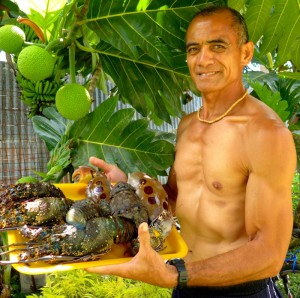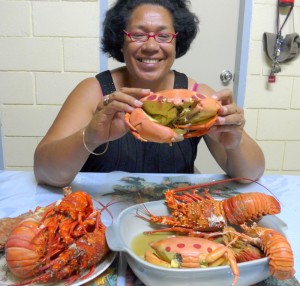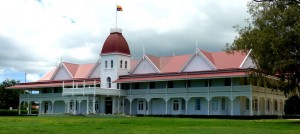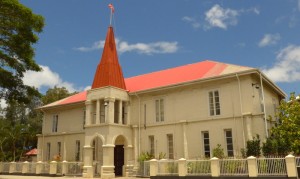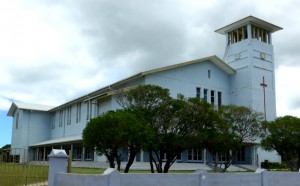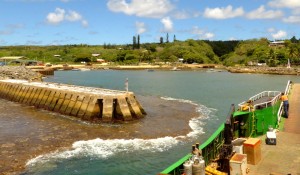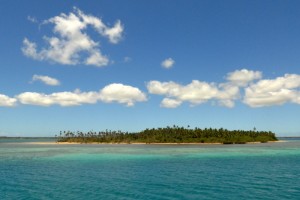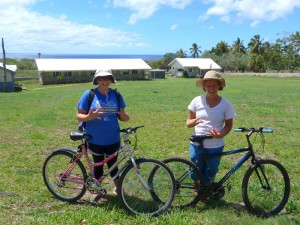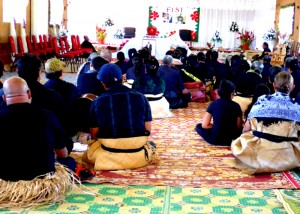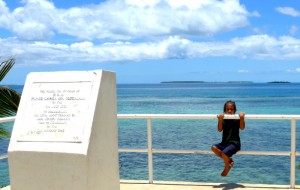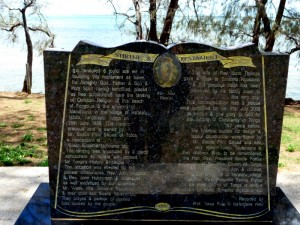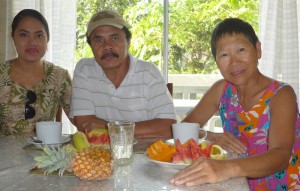My long trip in 2015 is centred around a sea voyage from Bluff, New Zealand to Cape Verde in the Atlantic Ocean. I choose Tonga as the first stop of this 160-day island-hopping journey. My friends either say “Where is Tonga?” or “There is not much to do!”. For a person passionate about islands, I disagree. I have a wonderful week in this mysterious Pacific island kingdom. Tonga, officially known as the Kingdom of Tonga, is the only Polynesian sovereign state which has never been colonised. It was first settled by an Austronesian-speaking group around 1500-1000BCE. By 12th century, Tongan paramount chief the Tu’i Tonga and Tongans had a reputation across the central Pacific. In the 15th century and again in the 17th century, civil war broke out.
Dutch explorers first arrived in 1616 followed by Abel Tasman in 1643 and James Cook in 1773, 1774 and 1777. The first London missionaries came in 1797 and the Wesleyan Methodist Rev Walter Lawry in 1822.
The most important leader in Tonga’s history is Tāufa’āhau. Baptised in 1831, he united Tonga into a kingdom in 1847 holding the chief title of Tu’i Kanokupolu. In 1875, he declared Tonga a constitutional monarchy, emancipated the “serfs”, limited the power of the chiefs, declared a code of law, land tenure and freedom of the press. Between 1900 and 1970, Tonga became a protected state under a Treaty of Friendship with Britain. In 2010, Tonga became a fully functioning constitutional monarchy.
An Island Kingdom
Tonga has a small population of 100,000 who inhabit in 52 out of its 176 islands. Its surface area of about 750 km² scatter over 700,000 km² of the southern Pacific Ocean. One more island has been formed following eruptions last December. The archipelago comprises five major island groups namely Tongatapu, ‘Eua, Ha’apai, Vava’u and Niuas’. Over 70% of the Togans reside on the main island of Tongatapu.
Tonga’s economy is characterised by a large non-monetary sector and relies heavily on overseas remittances as over 200,000 Tongans are living in the US, Australia and New Zealand. Despite its rich tourism resources, it receives less than 100,000 tourists a year. There are regular flights from Tongatapu to other islands. A weekly inter-island ferry leaves Nuku’alofa, the capital every Monday evening at 6pm and arrives in Vava’u 24 hours later.
The estimate GDP (nominal) and GDP(PPP) for 2011 is US$439million and USD$763 respectively with a GDP per capita nominal and PPP at US$4,220 and US$7,334 respectively. The exchange rate in mid January 2015 is roughly about one US dollar to 1.8 Tongan dollar (TOP).
January 18 Sunday: Hong Kong (GMT+8)– Auckland, New Zealand (GMT+12)
My 70-day voyage begins at Bluff, New Zealand. I decide to take this opportunity to visit a Pacific island. After having been to Fiji and Vanuatu, I pick Tonga which is off the beaten track. I took an Air New Zealand/Cathay Pacific flight at 3:30pm and arrived in Auckland at 8am the following day. I was exhausted as I had watched four films during the flight.
January 19 Monday: Auckland New Zealand – Tonga (GMT+12)
At 10:15am, I was finally on my way to my dream destination. Toni from the UK picked me up and took me to Dayspring Lodge in Tofoa, a village a couple of kilometres from Nuku’alofa. I was greeted by Semesi, owner of the lodge and his extended family including his daughter (Tupouseini), nephew (Isi), niece (Selina and her family, Terry and two sons). Semisi, a lecturer on economics and tourism is now living in Auckland.
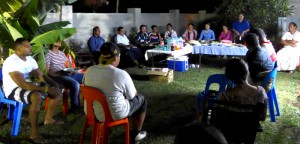 I had a small single room with breakfast for TOP60. I took an afternoon nap before joining a party in the garden. While the day is hot with a scotching sun, the evening is surprisingly pleasant with a temperature around 20°C.
I had a small single room with breakfast for TOP60. I took an afternoon nap before joining a party in the garden. While the day is hot with a scotching sun, the evening is surprisingly pleasant with a temperature around 20°C.
I had a sumptuous meal with a roast suckling pig (a local flavour), curry chicken, plenty of carbohydrate (pizza, rice, noodles, yam) and salad. Another lodger Sarah, an Australian medical student on internship tells me that the average weight of a Tongan adult is 93kg. Obesity and diabetic are serious health issues.
January 20 Tuesday: Tongatapu
I had a good sleep and woke up around 6am. With WiFi available, I was able to upload the travel notes on my trip to Bangkok before breakfast at 8am. Isi looks after the lodge and prepares breakfast with plenty of fresh fruits from the garden.
Semesi had offered to drop me off in Nuku’alofa around 10am. By 10:30am, he was still busy with visitors. I decided to walk. A few metres from the lodge, I found a man selling fish. I spotted a big bag of lobsters and crabs which I paid TOP30. Isi was shocked when he saw the seven lobsters and two crabs. It’s a real bargain!
It was almost 11:30am when I set off again. It is difficult to get lost on this small flat island which has a relatively good network of paved and dirt roads and a dozen mini-bus routes. The main and longest paved road is running from the waterfront in Nuku’alofa to Niutoua at the easternmost corner of the island. The only problem is that the bus does not run on a fixed schedule: it goes when it is full or half full.
It’s a pleasant walk along Hala Vaha’akolo. The local houses though simple are attractive surrounded by lush vegetation and fruit trees. I saw the Royal Tombs, Free Church of Tonga and Basilica of at Anthony of Padua. At the end of the road, I arrived at the Royal Palace which was built in Victorian style in 1867 and the waterfront. Here I turned left and walked towards the Little Italy Hotel which looks comfortable but is expensive (TOP250 for a single room).
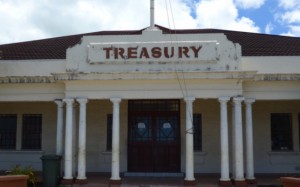 |
|
I had fantastic views of the reef with a dozen of idyllic islands. It’s low tide and dozens of locals were picking sea-cucumbers and seaweeds. I was amazed to see a black pig standing in the water apparently munching something. I later find out that pigs are treated as pets and eat fish here.
I walked past a BBQ eatery near the hotel and brought a fried fish for TOP2. It was fairly fresh and tasty. I walked back to the Palace and explored the other side of the waterfront. The city centre is filled with key government buildings. The architectural styles of the Prime Minister’s Office and Treasury are simple but elegant. The whole island is green: no building is taller than the coconut trees.
I stopped at the Visitors Centre where Tupouseini works. I met another tourist there who suggested me tour the island using public transportation. As it was almost 2pm, he recommended me go to the Paepae’o Tele’a terraced tombs at Lapaha.
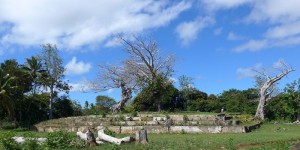 |
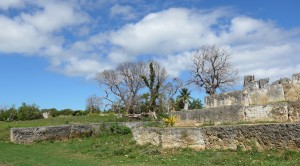 |
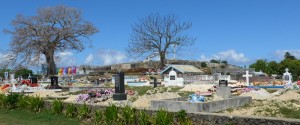 I followed his advice and boarded a minibus to Lapaha for TOP2. I got off the mini-bus before 3pm and spent some 40 minutes visiting half a dozen tombs located on both sides of the road. One of the stone tombs was built over 300 years ago for the 28th Tu’i Tonga with adjacent Namoa, a three-tiered pyramid. Which one? I do not know as there is no indication on site.
I followed his advice and boarded a minibus to Lapaha for TOP2. I got off the mini-bus before 3pm and spent some 40 minutes visiting half a dozen tombs located on both sides of the road. One of the stone tombs was built over 300 years ago for the 28th Tu’i Tonga with adjacent Namoa, a three-tiered pyramid. Which one? I do not know as there is no indication on site.
I was in a hurry as the last bus would leave at 4pm. Anyway, I had no problem in finding my way back to the lodge. Semisi and family were excited to have crustaceans for dinner. Selina was the chef and we had a wonderful dinner together.
January 21,Wednesday: ‘Eua
Geographically ‘Eua is the kingdom’s oldest island. It has a small population of about 5,000 with no public transportation. The cargo-cum-passenger ferry to ‘Eua leaves daily at 11am and returns to Tongatapu at 4pm. The journey takes two and a half hours costing TOP23.
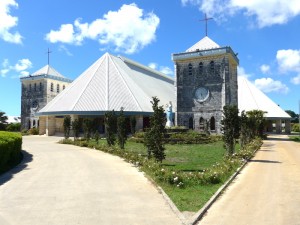 |
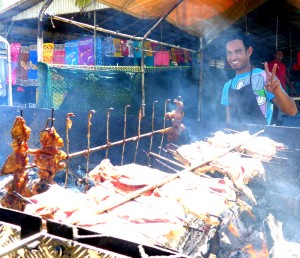 |
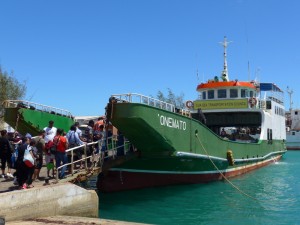 |
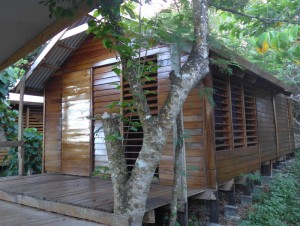 |
I booked a single room with facilities and breakfast at the Ovava Tree Lodge for TOP50 (Great value!). The lodge in the Ohonui village is just opposite the wharf. I like the lodge because of its proximity to the wharf and its architectural style with everything built with wood. The lodge surrounded by trees has a jungle feel. I met Debbie and Ian, an Australian couple working in Vava’u at the lodge.
I was extremely lucky to run into Bailey, a young American Peace Corp member who teaches in a school in the Tufuvai village with 250 people. She arrived on a 2-year contract last September. With her help, we had a lift to her village, explored two resorts nearby with ocean view and private beaches. Then she took us to a liquor store (the only one on the island) to buy beers (TOP3.3 a bottle). Bailey is wonderful and cheerful. Without her help, we would never have found our way to the liquor store.
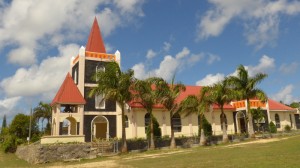 |
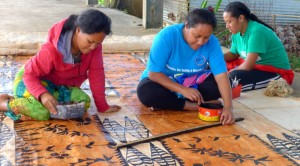 |
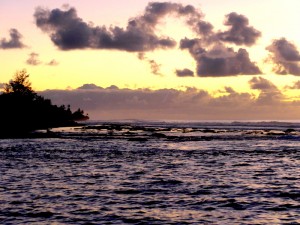 By the time we got back to the lodge, it was after 5:30pm. I was tired and fell asleep after a refreshing shower. It was a hot day but the room was breezy and cool. We had dinner at the lodge (TOP25) and had sword fish cooked with tomato, yam in coconut sauce, tomato salad and rice. I find the sword fish chewy and tough. I would not say the dinner was value-for-money and Debbie had hardly touched the fish. The dining room was swarmed with mosquitoes and I was badly bitten as usual. After dinner, I returned to my room and fled inside the mosquito net. Hence, I slept like a baby without any bite.
By the time we got back to the lodge, it was after 5:30pm. I was tired and fell asleep after a refreshing shower. It was a hot day but the room was breezy and cool. We had dinner at the lodge (TOP25) and had sword fish cooked with tomato, yam in coconut sauce, tomato salad and rice. I find the sword fish chewy and tough. I would not say the dinner was value-for-money and Debbie had hardly touched the fish. The dining room was swarmed with mosquitoes and I was badly bitten as usual. After dinner, I returned to my room and fled inside the mosquito net. Hence, I slept like a baby without any bite.
January 22, Thursday: ‘Eua
Bailey is energetic and most friendly. She kindly offered to accompany us on her flavourite hike to the northernmost end of the island to see cliffs and swim. We had a wholesome breakfast, set off shortly after 7:30am and met Bailey’s friend Sammy in the Ta’ango village. After Houma, the last village at the northern end of the paved road, we had an easy walk for another 2-3km before arriving at the cliffs.
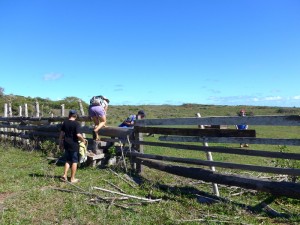 |
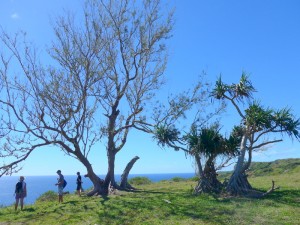 |
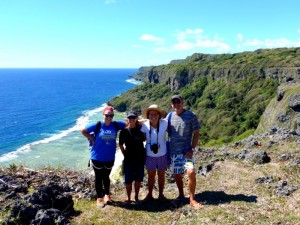 |
The panoramic views of the cliffs, vegetation, coastline and reef are breathtaking. The climb to the beach below is however treacherous: there is no sign and the coral limestone is uneven and sharp. I do not want to cut myself or fall from the cliffs. Hence, I moved slowly with great caution. Sammy who had taken the hike a couple of times got lost at one point too. We descended to the beach with the aid of four sets of ropes. I would never have come on my own!
At 11am, we finally arrived at the beach at Fango-tave. The water is warm and I set in the shallow end enjoying the awesome scenery of the cliffs and the deserted beach. I watched the sprays from the blow holes and coral fish including puffer fish swimming next to me.
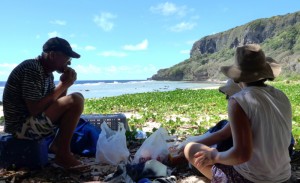 |
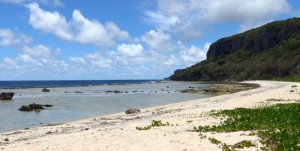 |
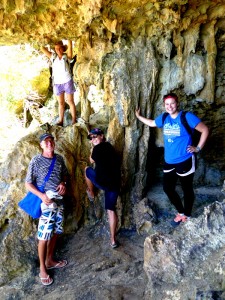 |
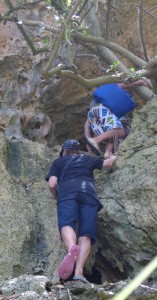 |
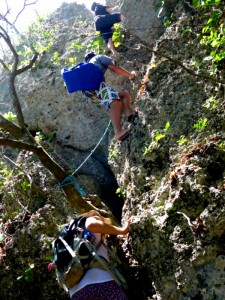 |
The return journey was much easier. We left the beach at 12:30pm and arrived at the lodge by 2:30pm. The ferry was late and did not leave the wharf till 5:15pm.
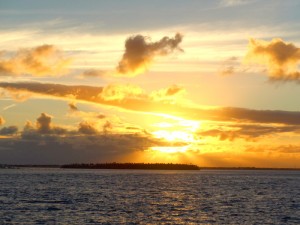 |
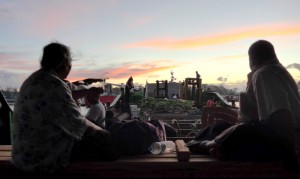 |
I was back on Tongatupa after 7:30pm. There was no bus. A lady at the up-market Waterfront Lodge kindly called a hired car for me. I paid TOP10 for a short ride. The driver took me to a take-away where I brought a fish cooked in coconut milk and rice for TOP5. I also paid TOP2 for a dessert with fruit soaked in coconut milk. But I find the fish tough and the dessert with a strange taste. 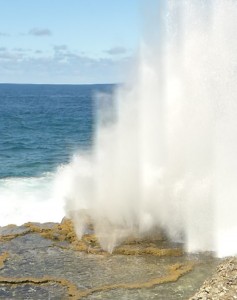
January 23, Friday: Tongatapu
For tourists, the easiest way to see the island with an area of 253km² is to rent a car (or bicycle). I have not taken my International Driving Licence with me and am too weak to cycle round the island. I prefer to travel by local buses. But the main problem is that I have to return to the bus terminal each time to catch another bus. At a result, I have only visited three attractions in a day.
Mapu’a Vaea
I spent half an hour waiting for a minibus and did not get one till 9:30am. There is a 5km-long series of blowholes along the village of Houma on the western coast of the island. These blowholes were formed as a result of erosion of the coral limestone by seawater thus creating cavities through which the water bursts. The water spray can reach heights of 30m, creating some awesome sights and music.
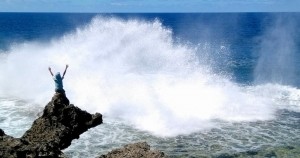 |
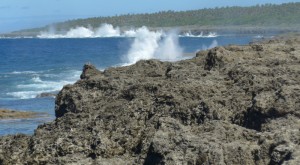 |
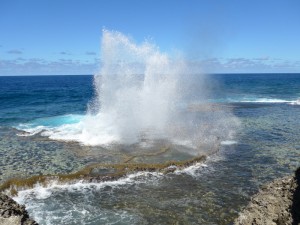 |
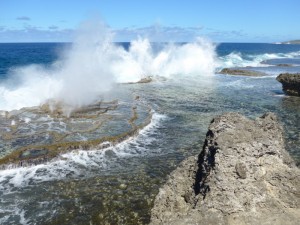 |
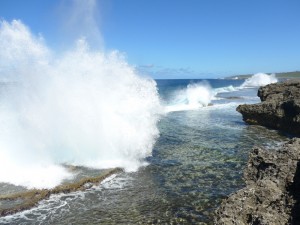 |
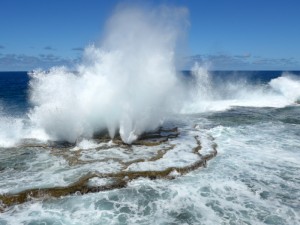 |
The Houma village looks tidy and well-organised. Most of the houses are built with wood with a nice front garden. There was a funeral in the village and I watched locals all dressed in black sitting in the hall singing. The atmosphere was solemn, dignified and peaceful.
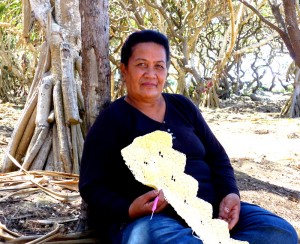 |
Western end of the island
I took a bus at the Nuku’alofa terminal to Hihifo located at the western end of the island. The driver dropped me off just before 12 noon and told me that the next bus might be coming in half an hour’s time. I therefore raced to see three attractions here: Abel Tasman Landing Site (January 20, 1643), Christianity Landing Place (June 28, 1826) and Ha’atafu Beach and Reef Reserve. I was back on the main road before 12:30pm. But the bus only came at 1pm! Locals without a car have to waste a lot of time waiting for buses.
Ha’amonga ‘a Maui
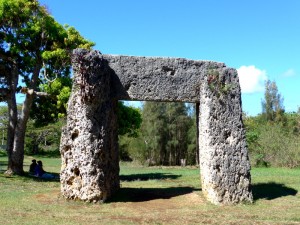 By 2:40pm, I was on another bus heading to Nuitoua to see an ancient stone trilithon built in around 1200 by Tu’i Tatui, the 11th Tu’i Tonga. The two vertical stones are 5m high, 1.4m thick and wide while the lintel stone is 5.8m, 1.4m wide and 0.61m thick. The notch carved on the top of the lintel may haved served as a guide to establishing the beginning of a new year.
By 2:40pm, I was on another bus heading to Nuitoua to see an ancient stone trilithon built in around 1200 by Tu’i Tatui, the 11th Tu’i Tonga. The two vertical stones are 5m high, 1.4m thick and wide while the lintel stone is 5.8m, 1.4m wide and 0.61m thick. The notch carved on the top of the lintel may haved served as a guide to establishing the beginning of a new year.
Before getting off the bus, I was warned that there was no return bus. With a map in hand, I know I can walk (2-3km) to catch a bus from Lapaha. The road was quiet and I had only seen two cars passing by in the direction of Lapaha. After walking 20 minutes, I saw a car stop. Mr. Wu who has been living here over 13 years gave me a lift. He says that Tonga produces high quality sea cucumber and Hong Kong is the biggest buyer.
I was back at the lodge at 4:45pm. Had I taken an island tour (TOP90) or rented a car (TOP50), I would never have had a chance to experience the tempo of the island life, meet locals and run into Mr. Wu.
Evening Cultural Show
In the evening, I joined a dinner cultural show (TOP55) at the Oholei Beach Hina Cave close to the airport. Toni who picked me up at the airport on arrival was the driver again. We arrived at the beach before 7:30pm. Dinner was supposed to start at 8pm. But the owner of the beach resort who is also a singer and presenter of the show talks non-stop. We did not eat till 9pm after he had prayed for over ten minutes. I was hungry and had two big helpings including raw fish, minced beef, steamed snapper, roast pork, sweet potato, yam salad etc.
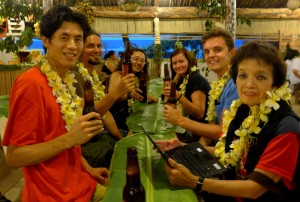 |
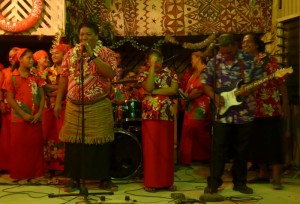 |
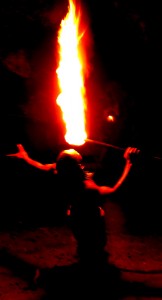 |
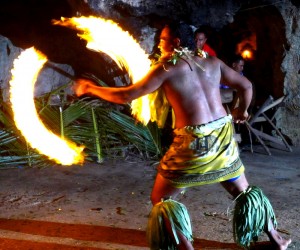 |
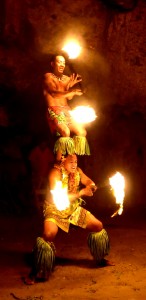 |
At 10pm, we were led into a cave to watch a cultural show. The owner-cum-presenter cracked jokes and the show did not finish till 11pm. I enjoy the dance by men which involves quick steps, stick beating and firm and power movements. The dance by the girls strangely reminds me of the Thai dance with a lot of body and subtle hand movements. The most spectacular performance is the fire dance by the two male dancers. It is a local custom to stick money into the performers’ clothe or put on his/her body which is awash with coconut oil.
I had a fantastic night enjoying the ambiance in the cave and the energy and smiles of the Tongans. I am delighted to hear from the owner that his operation provides jobs for some 40 villagers. His wish is to bring more tourists to Tonga which is important for the country’s economy.
January 24, Saturday: Kayaking
I joined a kayaking trip (TOP150). Vila picked me up after 9am. Today we had six participants including two Tongan couples from Australia. The weather was excellent: clear blue sky with some clouds. The sea was fairly calm most of the day.
We set off in five kayaks from the white house at Talafo’ou at the lagoon. I had a solo and paddled at my own pace. We took almost an hour to reach the Makaha’a Island and walked round the island within 15 minutes.
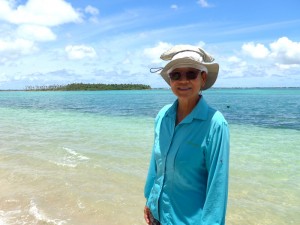 |
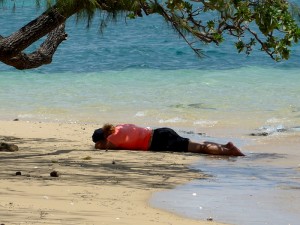 |
Then we paddled across the channel to reach the Pangaimotu Island, a popular beach for the locals. I was the slowest and took almost half an hour to arrive. I had fish and chip for lunch and a round island stroll. Then I snorkeled around a ship wreck close to the beach.
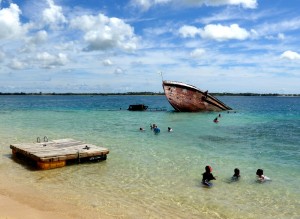 |
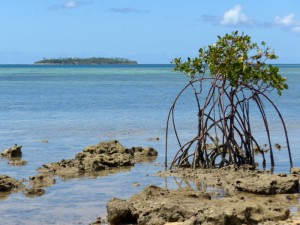 |
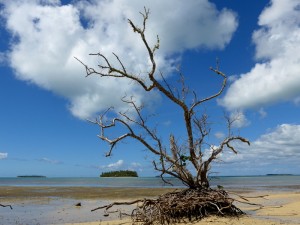 |
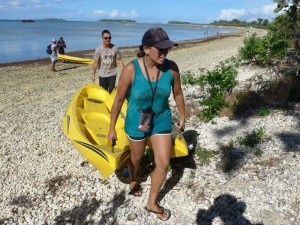 |
At 4pm, we set off aiming at landing at the beach not too far from the waterfront of the city centre. The sea was slightly rough owing to strong wind and currents. A man on a fast water motor-bike was circling not far from our course. I worried for a second when my kayak became unsteady and got slightly out of control. Vila rushed up to my side. I assured her that I was slow but fine. Indeed I was the last and did not land till 4:30pm.
Vila gave me a ride and I was back in the lodge before 5:30pm. I felt good and had no pain after kayaking for 9-10km.
January 25, Sunday: Rest Day
Tongans by law cannot work on Sunday which is time for the church, food and rest. There are some 2,000 buildings belonging to half a dozen of churches on the island of Tongatapu.
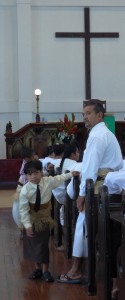 |
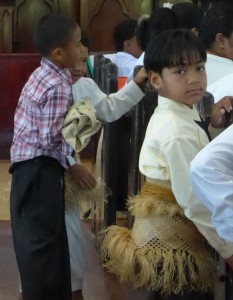 |
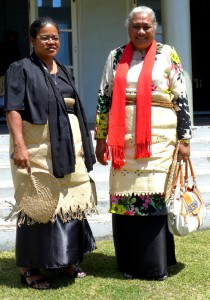 |
I joined Semisi and attended the 10am service at the Methodist Church. Everyone put on his/her best clothes: all adults have their ‘daova‘ on. Though the service was conducted in Tongan, I could follow as the psalms were shown on the screen in English. I enjoyed the beautiful singing of choir. After the service, Semisi told me that the King and Queen were sitting in front of us. I wish I had taken a photo of the royal couple.
We had to pick up Isi, Terry and his son at a Pentecostal Church nearby. I went in this small church and sat for 15 minutes. The service was delivered in English to 14 church-goers. The minister from Vanuatu delivered his sermon in a dramatic way talking about miracles he had performed.
Mr. Wu had kindly offered to drive me around in the afternoon. I asked him to go to the Natural Land Bridge on the south-eastern side of the island. The signage is poor and we spent over an hour finding the right track. I have seen similar geological features and do not find this one particularly impressive.
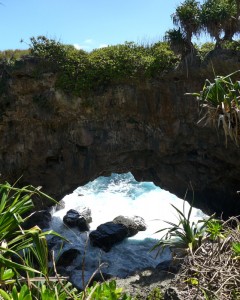 |
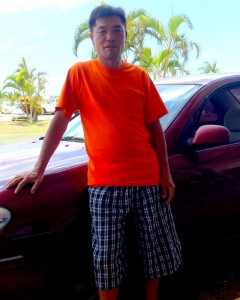 |
We had a cold beer at the nearby Keleti Resort which affords one of the best views on the island. I love to stay here sitting in a sinkhole watching the sea, blue sky and water sprays from the blow holes.
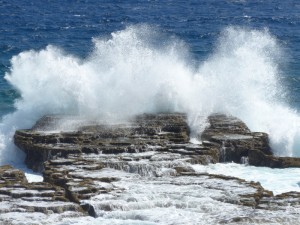 |
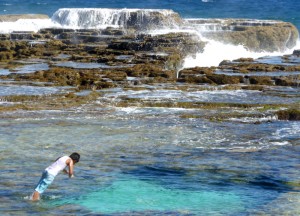 |
In the evening I worked on my travel notes and photos. Semisi invited me to share the ‘umu‘ (meat and vegetables wrapped in taro leaves and cooked in an underground oven). I appreciate his hospitality and the meat is delicious.
January 26 Monday: Travel Day
Originally I asked Toni for a ride (TOP15). Mr Wu however insisted to take me to the airport as he was not working. I left the lodge at noon. The airline staff had to call the immigration service in Auckland to confirm that my boat boarding pass at Bluff would be valid proof of my onward travel. The plane took off around 2:30pm and I arrived in Auckland shortly after 5pm.
Remarks (to add)



